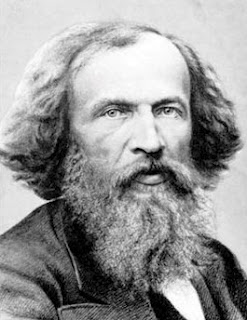About our Name
Many ask about the origin of the name 'Oxcyon', pronounced
(OX-SEE-ON).
It has an interesting history. Dmitri Mendeleev published the first periodic table of the chemical elements in 1869 based on properties which appeared with some regularity as he laid out the elements from lightest to heaviest. When Mendeleev

proposed his periodic table, he noted gaps in the table, and predicted that as-then-unknown elements existed with properties appropriate to fill those gaps. Some of which still might be missing.
In 1902, having accepted the evidence for elements helium and argon, Mendeleev placed these Noble Gases in Group 0 in his arrangement of the elements. As Mendeleev was doubtful of atomic theory to explain the Law of definite proportions, he had no a prior reason to believe hydrogen was the lightest of elements, and suggested that a hypothetical lighter member of these chemically inert Group 0 elements could have gone undetected and be responsible for radioactivity. Currently some periodic tables of elements put lone neutrons in this place, and it matches Mendeleev's predictions fairly well. The heavier of the hypothetical proto-helium elements Mendeleev identified with coronium, named by association with an unexplained spectral line in the Sun's corona. A faulty calibration gave a wavelength of 531.68 nm, which was eventually corrected to 530.3 nm, which Grotrian and Edlén identified as originating from Fe XIV in 1939.
The lightest of the Zero Group gases, the first in the Periodic Table, was assigned a theoretical atomic mass between 5.3×10−11 and 9.6×10−7. The kinetic velocity of this gas was calculated by Mendeleev to be 2,500,000 meters per second. Nearly mass-less, these gases were assumed by Mendeleev to permeate all matter, rarely interacting chemically. The high mobility and very small mass of the trans-hydrogen gases would result in the situation, that they could be rarefied, yet appear to be very dense.
Mendeleev later published a theoretical expression of the ether in a small booklet entitled, A Chemical Conception of the Ether, in 1904. His 1904 publication again contained two atomic elements smaller and lighter than hydrogen. He treated the “ether gas” as an interstellar atmosphere composed of at least two lighter-than-hydrogen elements. He stated that these gases originated due to violent bombardments internal to stars, the Sun being the most prolific source of such gases. According to Mendeleev's booklet, the interstellar atmosphere was probably composed of several additional elemental species, yet to be determined, one of which was referred to as Oxcyon.